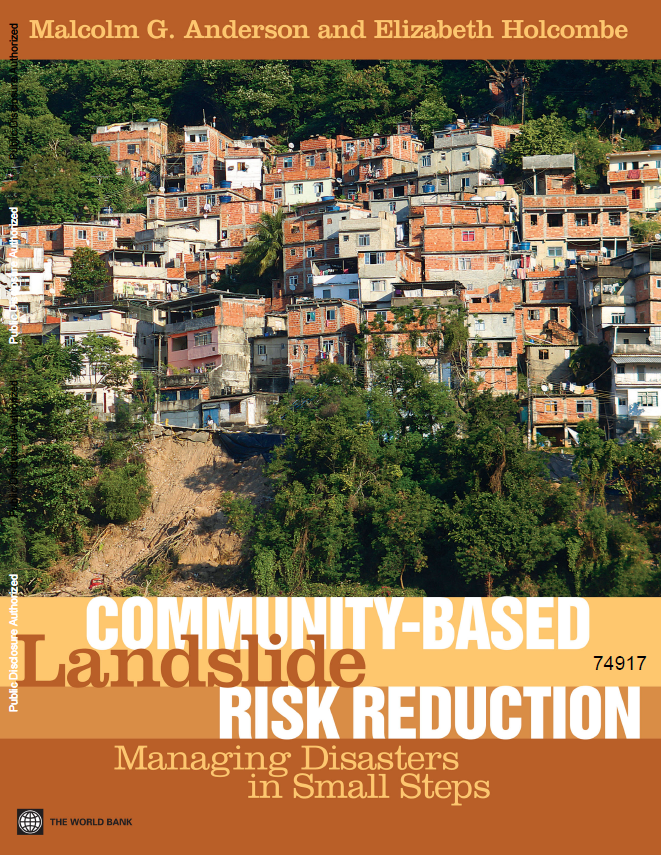26 February 2013
A new, free landslide resource – Community based landslide risk reduction: Managing disasters in small steps
Posted by Dave Petley
Over at Bristol University in southwest England Malcolm Anderson and Liz Holcombe have been doing some really interesting work over the last few years in the Caribbean, seeking to find ways to enhance resilience to landslides. This has been a highly successful programme that in many ways has not received the recognition that it deserves. This work has culminated in a new World Bank publication entitled ‘Community based landslide risk reduction: Managing disasters in small steps’:
 The book can be downloaded as a PDF for free from here:
The book can be downloaded as a PDF for free from here:
https://openknowledge.worldbank.org/handle/10986/12239
And it can be read as an e-book online here:
http://issuu.com/world.bank.publications/docs/9780821394564
This is a really important and useful contribution – and one that I recommend thoroughly. For information, the abstract is as follows:
This book has two main aims: to demonstrate to international development agencies, governments, policy makers, project managers, practitioners, and community residents that landslide hazard can often be reduced in vulnerable urban communities in the developing world, and to provide practical guidance for those in charge of delivering Management of Slope Stability in Communities (MoSSaiC) on the ground. The purpose of the book is to take readers into the most vulnerable communities in order to understand and address rainfall-triggered landslide hazards in these areas. Community residents are not just seen as those at risk, but as the people with the best practical knowledge of the slopes in their neighborhood. As used here, ‘community based’ means engaging and working with communities to find and deliver solutions to landslide risk together. This approach leads governments to develop new practices and policies for tackling landslide risk. This book standardizes those elements of MoSSaiC that have led to its successful implementation in the Eastern Caribbean, and that are essential to the overall objectives (such as community engagement, mapping localized slope features, and broad drainage design principles). The book’s nine chapters provide guidance to project managers and practitioners on the entire end-to-end process of community-based landslide risk reduction. While certain chapters are more directly relevant to one audience than another, it is helpful for all audiences to read the ‘getting started’ section of each chapter and be alerted to the nine project milestones.


 Dave Petley is the Vice-Chancellor of the University of Hull in the United Kingdom. His blog provides commentary and analysis of landslide events occurring worldwide, including the landslides themselves, latest research, and conferences and meetings.
Dave Petley is the Vice-Chancellor of the University of Hull in the United Kingdom. His blog provides commentary and analysis of landslide events occurring worldwide, including the landslides themselves, latest research, and conferences and meetings.